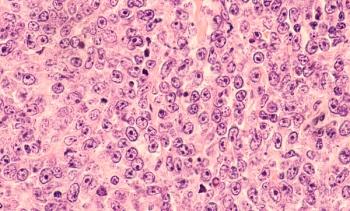
Research Reveals a Lack of Racial Diversity in Clinical Trials for Cancer Drugs
A new study shows a lack of racial and ethnic diversity in clinical trials for cancer drugs, highlighting issues currently being addressed by the FDA.
Clinical trials for cancer drugs were shown to lack racial and ethnic diversity in their study populations, according to findings published this week in the journal JAMA Oncology.1
Researchers from the University of British Columbia (UBC), The University of Texas MD Anderson Cancer Center, the Fred Hutchinson Cancer Center, and Baylor University sought to evaluate the frequency of race reporting and race representation in 230 trials supporting FDA oncology drug approvals from July 2008 to June 2018. The study analyzed 112,293 participants from the 4 major racial and ethnic groups in the United States (white, black, Asian, and Hispanic):
- Race reporting on white population in trials, 144 (62.6%)
- Race reporting on Asian population in trials, 110 (47.8%)
- Race reporting on black population 88 in trials, (38.2%)
- Race reporting on Hispanic population in trials, 23 (10%)
Among the 230 trials, 145 (63%) reported on at least 1 group, 18 (7.8%) reported on the 4 major groups, and 58 (25.2%) reported on racial and ethnic subgroups. The differentiation of race reporting in trials between July 2008 and June 2013 versus July 2013 and June 2018 changed nominally (45 [56.6%] vs 100 [67.1%]; for an odds ratio [OR] of 1.63; 95% CI, 0.93-2.87; P = .09), as did race subgroup analysis (13 [16.1%] vs 45 [30.2%]; OR, 2.26; 95% CI, 1.16-4.67; P = .03).
The data revealed a stark contrast in representation for the black and Hispanic populations, with blacks representing 3.1% of trial participants and Hispanics representing 6.1%. Both blacks and Hispanics were underrepresented in trials, with black enrollees representing only 22% of expected incidence and Hispanic enrollees 44% of expected incidence; by contrast, whites were enrolled at 98% their rate of cancer incidence and Asians 438% the expected cancer incidence rate. This lack of representation was further exemplified by the minimal change in proportion from each race enrolled between July 2008 and June 2013 versus July 2013 and June 2018 (blacks, 3.6% vs 2.9% and Hispanics, 5.3% vs 6.7%).
A lack of diversity in cancer studies has been documented previously, as scientists from Johns Hopkins' Bloomberg School of Public Health wrote in a commentary in 2018 about how fewer than 5% of breast cancer studies were stratified by race and socioeconomic factors.2 These researchers emphasized the need to prioritize social factors like race to understand correlating vulnerability and mortality rates to specific ethnicities.
For many years, assessment devices like the Breast Cancer Risk Assessment Tool was only validated for white women, which significantly underestimated the risk of breast cancer in black women who have higher rates of breast cancer at younger ages.2 By utilizing data derived from a primarily white study group, scientists ignore the impact of cancer drug efficacy on the other 3 major race groups which may prove detrimental to survival rates.
Lead study author Jonathan Loree,1 MD, assistant professor in the department of medicine, division of medical oncology at UBC,
Delving into the distinctions found in each race can exhibit personalized approaches to treating patients based on social factors, but the disparity in race enrollment inhibits this interpretation. Senior investigator in the study Kanwal Raghav, MD, assistant professor in the department of gastrointestinal medical oncology at The University of Texas MD Anderson Cancer Center, provided additional insight on how to combat these disparities. “A potential step in this direction would be if the regulatory agencies request postapproval studies fueled with real-world data to help generate evidence and fill the disparity gaps for otherwise underrepresented subgroups in initial studies,” said Raghav.
Raghav’s idea for real-world data involvement is an approach the FDA called for in a framework released in December 2018.3 Back in 2016, Congress passed the 21st Century Cures Act, which directed the FDA to develop processes for using real world evidence (RWE) in the course of drug regulation.4 The FDA joined COTA Healthcare in a 2-year research and collaboration agreement to reform treatment through RWE and electronic health records (EHRs). Starting with breast cancer, the FDA and the healthcare data and analytics company would create a study protocol to guide approaches to handling treatment within subpopulations.5
COTA is a company founded by cancer doctors and data scientists with the idea of harnessing the vast amounts of disorganized EHRs to interpret the data so that doctors can relate these findings toward current cancer patients. COTA Chief Medical Officer Andrew Norden, MD, MPH, MBA,
The use of EHRs and RWE to combat racial disparity in clinical trials is providing innovative steps to the inclusion of underrepresented races like blacks and Hispanics into data. Through the continued effort by the FDA and COTA to correct race representation, doctors can understand what cancer treatments are best for their patients.
“Real-world evidence is one of many tools that we can use to help address variation in subpopulations and to learn more about how to best utilize cancer treatments to improve outcomes in patients,” said Loree.
References
- Loree JM, Anand S, Dasari A, et al. Disparity of Race Reporting and Representation in Clinical Trials Leading to Cancer Drug Approvals From 2008 to 2018. [published online August 15, 2019]. JAMA Oncology. doi: 10.1001/jamaoncol.2019.1870.
- Dean LT, Gehlert S, Neuhouser ML, et al. Social factors matter in cancer risk and survivorship. [published online May 30, 2018]. Cancer Causes & Control. doi: 10.1007/s10552-018-1043-y.
- Framework for FDA’s real-world evidence program. www.fda.gov/media/120060/download. FDA website. Published December 2018. Accessed August 21, 2019.
- Zegarelli BM. 21st Century Cures Act requires FDA to expand the role of real world evidence. Mintz website. mintz.com/insights-center/viewpoints/2146/2016-12-21st-century-cures-act-requires-fda-expand-rolereal-world. Published December 19, 2016. Accessed August 21, 2019.
- COTA Healthcare website. cotahealthcare.com. Accessed August 21, 2019.
Newsletter
Stay ahead of policy, cost, and value—subscribe to AJMC for expert insights at the intersection of clinical care and health economics.







































